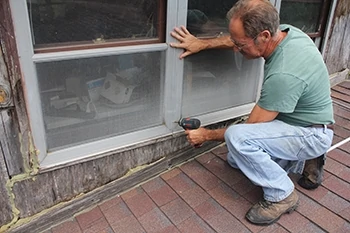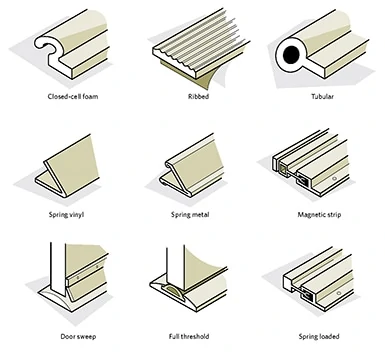Save Energy, Save Money
By Tom Matthews
The heating and cooling system accounts for approximately 45 percent of the average home’s utility bill, or about 45 cents of every dollar. To pay lower utility bills, it makes sense (and cents) to use less energy. Here are some tips to accomplish that while keeping your home comfortable.

Get with the Program
Programmable thermostats automatically adjust your home’s temperature settings several times a day to fit your lifestyle. When used properly they can save about $150 per year on energy costs and allow you to program when the system should scale back heating or cooling. In the winter, program the heat to kick on during your commute homeward so you step into a warm house. In the summer, the system can automatically keep air conditioning low in the morning to avoid cooling an empty house while you’re at work.
Stay in the Zone
Zone heating is an efficient method for optimizing the way you warm your home. Studies have shown that typical occupants spend 80 percent of the time in 20 percent of the house, so it makes sense to only heat or cool the areas being used.
A basic zoning technique for an existing forced-air heating system is to adjust the vents in the unoccupied rooms. Don’t close the vents completely, however. Sealing the vents closed could reduce airflow through the air handler, cause pressure imbalances and put stress on the duct connections. Closing the vents by 75 percent can be effective. (The vent nearest to the thermostat should always remain open).
Space heaters are a simple and cost-effective way to supplement your central heating system, warming one room or “zone” at a time. The most common are ceramic space heaters with fan-forced air. Available in a wide range of designs, they’re safe, compact and ideal for heating spaces up to 150 square feet.
Some homes have integrated system zoning, which involves multiple thermostats connected to a control panel that operates different dampers within the HVAC ductwork. Radiant floor heating is another option for controlling heat zones.
For forced-air systems, zone control works best in homes where the different zones can be isolated from each other with closable doors. Avoid shutting off the heat entirely in an unused part of your home, because condensation could form on cold interior wall surfaces and lead to mold. Also, keep all rooms at a minimum of 50°F in the winter to prevent water pipes from freezing.

Change your Filter
Be diligent about regularly replacing the filters that remove dust from the air as it circulates through the HVAC system. Most systems use disposable filters. Some furnaces have an electro-static filter, which is a sturdy metal filter that needs to be cleaned every few months. In either case, a clogged filter hinders airflow, and your system will have to work harder to achieve the temperature programmed in your thermostat. When the system works harder, it wears out the HVAC components faster and raises your power bill.

High-Efficiency Windows
More than just glass and a frame, modern energy-efficient windows include spacer systems, gas fillings and special glass options that can reduce energy usage by 34 percent compared to uncoated single-pane windows. The space inside an insulating glass unit—between the double glass panes—may be filled with Argon gas, an odorless, colorless, non-toxic gas that is six times denser than air. This design prevents air infiltration and acts as an added barrier to prevent harmful ultraviolet rays from entering the home. Additionally, the Low E (emissivity) glass has a transparent metallic oxide coating that reflects long-wave infrared energy, bouncing heat back to its source.

However, new windows aren’t always in the budget. One alternative is installing aluminum storm windows, which easily fasten over existing windows to insulate and block drafts. Some storm windows even come with Low-E glass.

High-Efficiency Water Heaters
To maintain a preset water temperature, conventional tank-style water heaters must use energy to cycle on frequently, even when there is no demand for hot water.

Tankless water heaters, on the other hand, are more efficient because they eliminate the need to continually heat a large supply of water. Often called “on demand” water heaters, tankless units only heat the water as it is needed. The compact size of a tankless unit is another benefit, since the bulk of a traditional tank-style unit is due to the tank itself. (Tankless units can, however, cost two to four times more than conventional tank heater, so it’s worth doing a little homework to explore your options.)
Side Note 1
Seal Leaky Windows
Ideally, your home should have double-pane and low-emissivity coated windows. Of course, window replacement isn’t always in the budget. Check out these alternatives.

Heat-Shrink Insulation: Window insulation kits come with double-sided adhesive tape and a large sheet of plastic film. Stick the tape around the window frame on all four sides, and then apply the film onto the tape so it completely covers the window, creating a sealed air space. Cut away the excess film and use a hair dryer to heat-shrink the film so it tightens and shows no wrinkles. The tightened film guarantees a draft-free seal.
Heavy Plastic Sheeting: Another option for wooden frame windows is to cover the outside with heavy plastic to reduce cold air infiltration. Staple the sheeting over the outside, leaving a 4-in. overhang around the perimeter. Secure the edges with wooden furring strips, fasten to the outside window frame, then trim off the excess plastic.
Side Note 2
Fill Gaps with Weather-Stripping
Without the proper weather-stripping and caulking, a substantial percentage of your energy costs will vanish into the ether. Fill leaks between nonmoving parts (between window frame and wall) with caulking. Seal leaks between moving parts (between door and frame) with weather-stripping. You can seal a house using a variety of weather-stripping products.
Compression Strips include open- and closed-cell foam or rubber tapes, as well as tubular strips. The open-cell tape will give you a quick fix until you can properly measure and fit a permament solution. Closed-cell tapes allow you to correctly size the gap you are working with and are more durable for doors and windows that are used often. Use where there is a pressure stress: along the bottom of vertical sliding windows, around attic hatches or on hinged windows and doors.
Tension Strips made of spring vinyl or spring metal are used in similar applications as compression strips. The spring mechanism adapts to long unequal distances from the weather-strip to the door or window.
Combination Types include spring-loaded, self-adjusting strips or magnetic strip systems, which are both effective for doors and hinged windows.
Door Sweeps, Bottoms and Thresholds seal the gap between the door and the floor. Sweeps and bottoms are often made of vinyl or rubber and attach to the bottom of a door. Thresholds attach to the floor, require clearance beneath the door and include a vinyl or rubber strip for an excellent draft seal.





